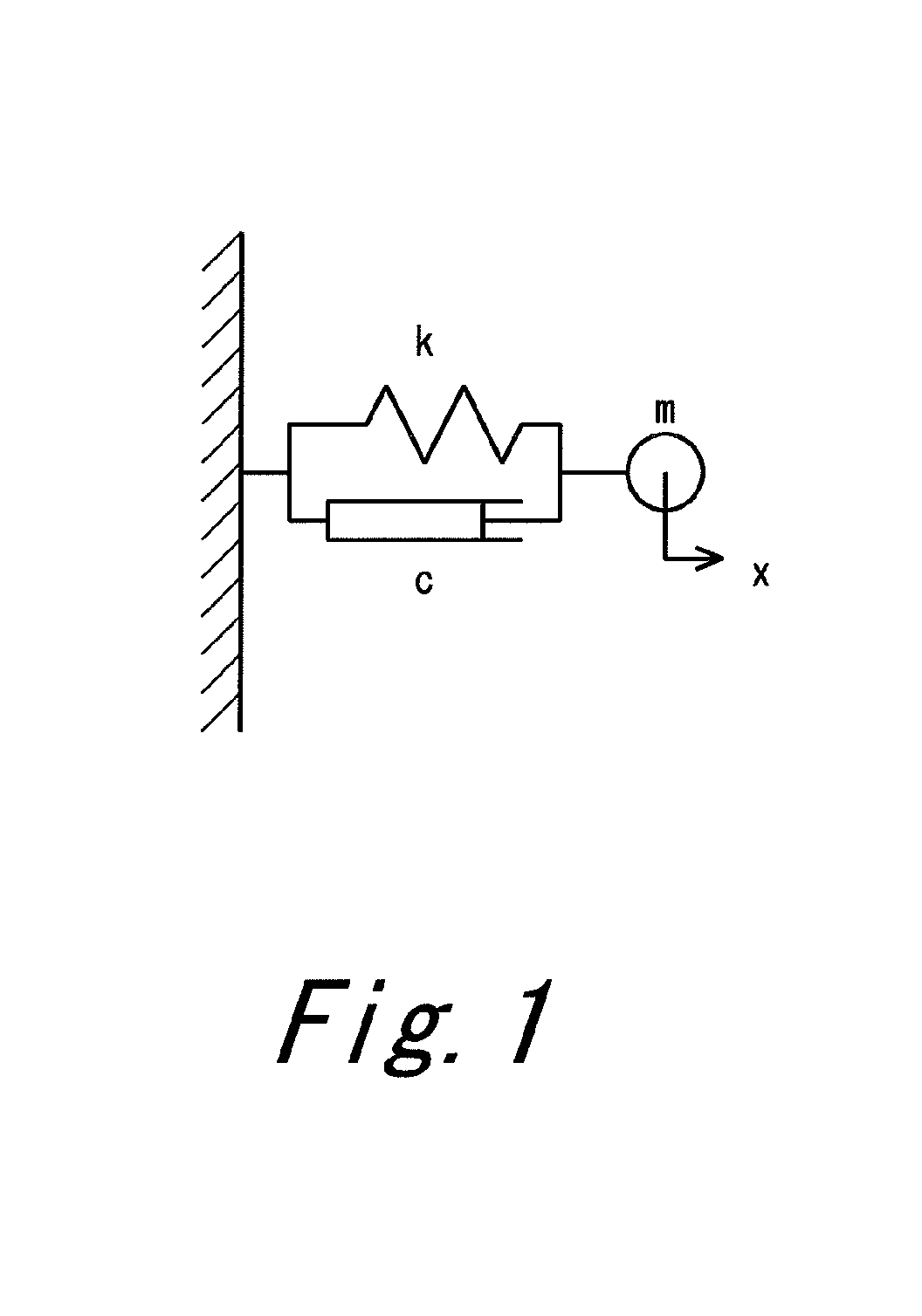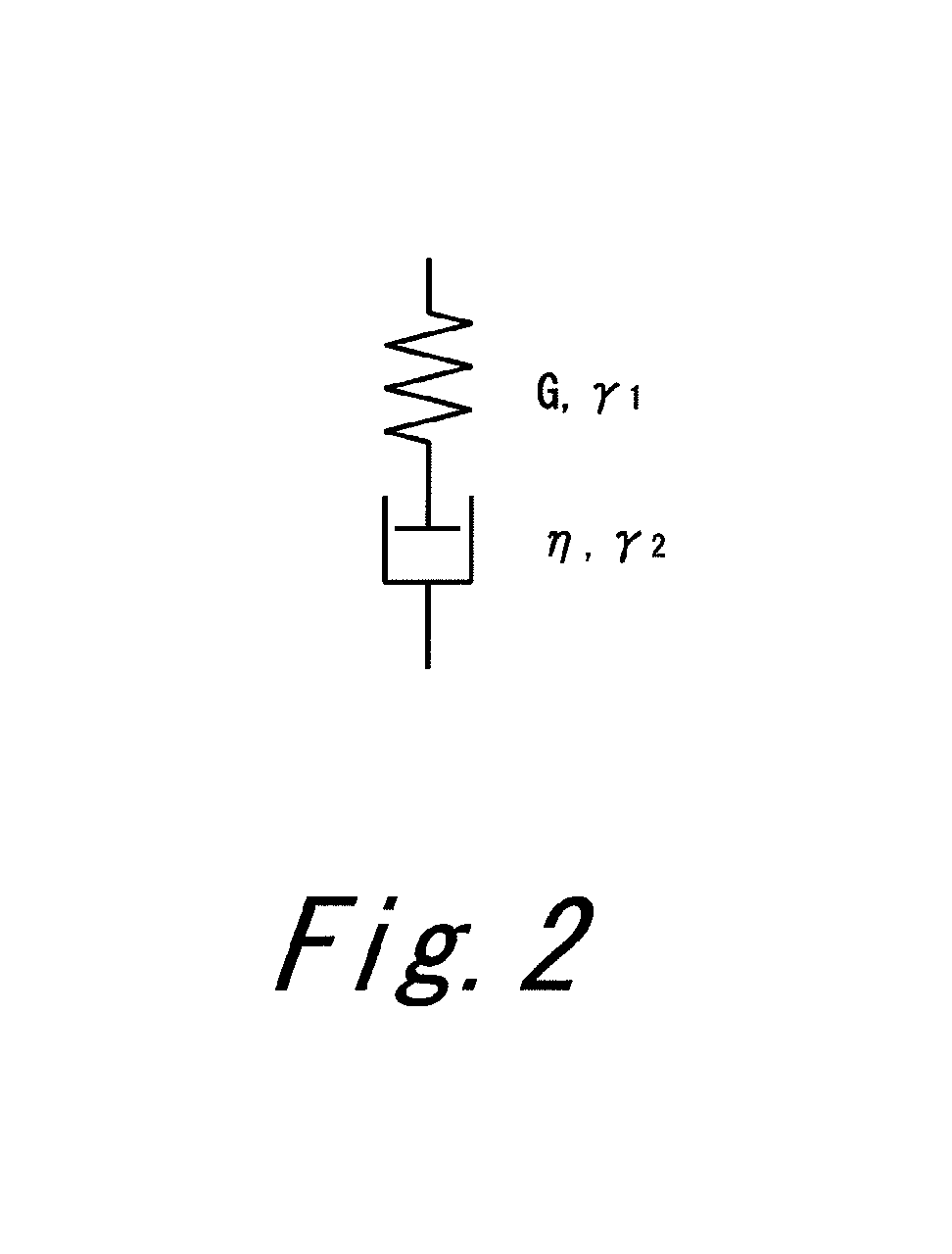Method for predicting modal damping ratio of composite head
a composite head and modal damping technology, applied in the field of modal damping ratio prediction of composite head, can solve the problems of difficult prediction of the ball hitting sound in the composite head, and the modal damping ratio of the composite head is difficult to predict, so as to achieve the effect of accurately predicting the modal damping ratio of the composite head
- Summary
- Abstract
- Description
- Claims
- Application Information
AI Technical Summary
Benefits of technology
Problems solved by technology
Method used
Image
Examples
example 1
[0163]first region R1 (almost face)=material B (a titanium alloy is assumed; ζ=0.3)[0164]second region R2 (almost sole)=material C (a titanium alloy is assumed; ζ=0.3)[0165]third region R3 (almost crown)=material D (CFRP is assumed; ζ=1.5)
example 2
[0166]first region R1 (almost face)=material B (a titanium alloy is assumed; ζ=0.3)[0167]second region R2 (almost sole)=material C (a titanium alloy is assumed; ζ=0.3)[0168]third region R3 (almost crown)=material A (CFRP is assumed; ζ=0.3)
[0169]In example 2, the material damping ratio ζ is 0.3% in all the regions (regions R1, R2, and R3) of the head. Therefore, example 2 is similar to a head made of a single material. On the other hand, in example 1, the material damping ratio ζ of the third region R3 (most of a crown part) is set to 1.5%, and the material damping ratios ζ in the remaining regions R1 and R2 are set to 0.3%. Therefore, example 1 is similar to a composite head including a metal and CFRP.
[0170]FIG. 13 is a graph showing the modal damping ratios of examples 1 and 2. A thick line shows the modal damping ratio of example 1. A thin line shows the modal damping ratio of example 2. As shown in the graph, a mode (frequency) in which example 1 is close to example 2 exists. By ...
reference example 1
[0172]The validity of a modal damping ratio to be calculated was examined using a calculation model of a flat plate shape comprising a single material. The shape of the flat plate was set to a rectangle. The flat plate had 201 mm long, 110 mm wide, and 2.48 mm thickness. A plate including only the material F was used as a calculation model. The damping ratio ζ of a material F was 1.5%, and the damping ratio ζ of the material was used as a representative value having no frequency dependency.
[0173]A modal damping ratio of the calculation model was calculated in the same manner as in example 1. A constraint condition was set to free. An acting point of a unit impact force was set to the center of the rectangle. The obtained modal damping ratio is shown in the graph of FIG. 14. An upper line graph of FIG. 14 shows the calculation result of reference example 1.
PUM
| Property | Measurement | Unit |
|---|---|---|
| frequency | aaaaa | aaaaa |
| frequency | aaaaa | aaaaa |
| frequencies | aaaaa | aaaaa |
Abstract
Description
Claims
Application Information
 Login to View More
Login to View More - R&D
- Intellectual Property
- Life Sciences
- Materials
- Tech Scout
- Unparalleled Data Quality
- Higher Quality Content
- 60% Fewer Hallucinations
Browse by: Latest US Patents, China's latest patents, Technical Efficacy Thesaurus, Application Domain, Technology Topic, Popular Technical Reports.
© 2025 PatSnap. All rights reserved.Legal|Privacy policy|Modern Slavery Act Transparency Statement|Sitemap|About US| Contact US: help@patsnap.com



